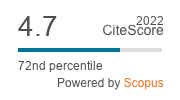Aflatoxin producing fungi cause contamination of food and feed resulting in health hazards and economic loss. It is imperative to develop workable control measures throughout the food chain to prevent and reduce aflatoxin contamination. This is a critical review of contemporary published papers in the field. It is a review of reports from the original aflatoxin researches conducted on foods, from 2015-2020. Most of the reports show high aflatoxin contaminations in food at levels that exceed a regulatory limit of 20 μg/kg and 4 μg/kg set for foods for human consumption in the USA and European Union, respectively. The highest aflatoxin concentration (3,760 μg/kg) was observed in maize. Some of the strategies being deployed in aflatoxin control include application of biocontrol agents, specifically of Aflasafe™, development of resistant crop varieties, and application of other good agricultural practices. We recommend the adoption of emerging technologies such as combined methods technology (CMT) or hurdle technology, one health concept (OHC), improved regulations, on-line monitoring of aflatoxins, and creative art intervention (CAI) to prevent or restrict the growth of target aflatoxin causative fungi.
REVIEW ARTICLE
Aflatoxin contamination and recommendations to improve its control: a review
L.D. Kaale Related information
1University of Dar es Salaam (UDSM), Department of Food Science and Technology, P.O. Box 35134, Dar es Salaam, Tanzania.
*Corresponding author: elykaale@gmail.
, M.E. Kimanya Related information*Corresponding author: elykaale@gmail.
2School of Life Sciences and Bioengineering, Nelson Mandela African Institution of Science and Technology, P.O. Box 447, Arusha, Tanzania.
, I.J. Macha Related information3University of Dar es Salaam (UDSM), Department of Mechanical and Industrial Engineering, P.O. Box 35131, Dar es Salaam, Tanzania.
, N. Mlalila Related information1University of Dar es Salaam (UDSM), Department of Food Science and Technology, P.O. Box 35134, Dar es Salaam, Tanzania.
4Ministry of Livestock and Fisheries, P.O. Box 2847, Dodoma, Tanzania.
4Ministry of Livestock and Fisheries, P.O. Box 2847, Dodoma, Tanzania.
World Mycotoxin Journal: 14
(1)- Pages: 27 - 40
Published Online: November 16, 2020
Abstract
2023 Journal Impact Factor
2.0
source: Journal Impact Factor 2023™ from Clarivate™

Institutional Offers
For institutional orders, please contact [email protected].
Purchase Options
-
P. Battilani and M. Camardo Leggieri
-
F. Xu, R.C. Baker, T.B. Whitaker, H. Luo, Y. Zhao, A. Stevenson, C.J. Boesch and G. Zhang
-
A.O. Aasa, F.F. Fru, O.A. Adelusi, S.A. Oyeyinka and P.B. Njobeh
-
F. Wu
-
V. Ostry
-
V. Ostry
-
R. Bandyopadhyay, A. Ortega-Beltran, A. Akande, C. Mutegi, J. Atehnkeng, L. Kaptoge, A.L. Senghor, B.N. Adhikari and P.J. Cotty
-
A. Logrieco, A. Moretti and M. Solfrizzo
-
G. Schatzmayr and E. Streit
-
B. Grenier and I. Oswald



